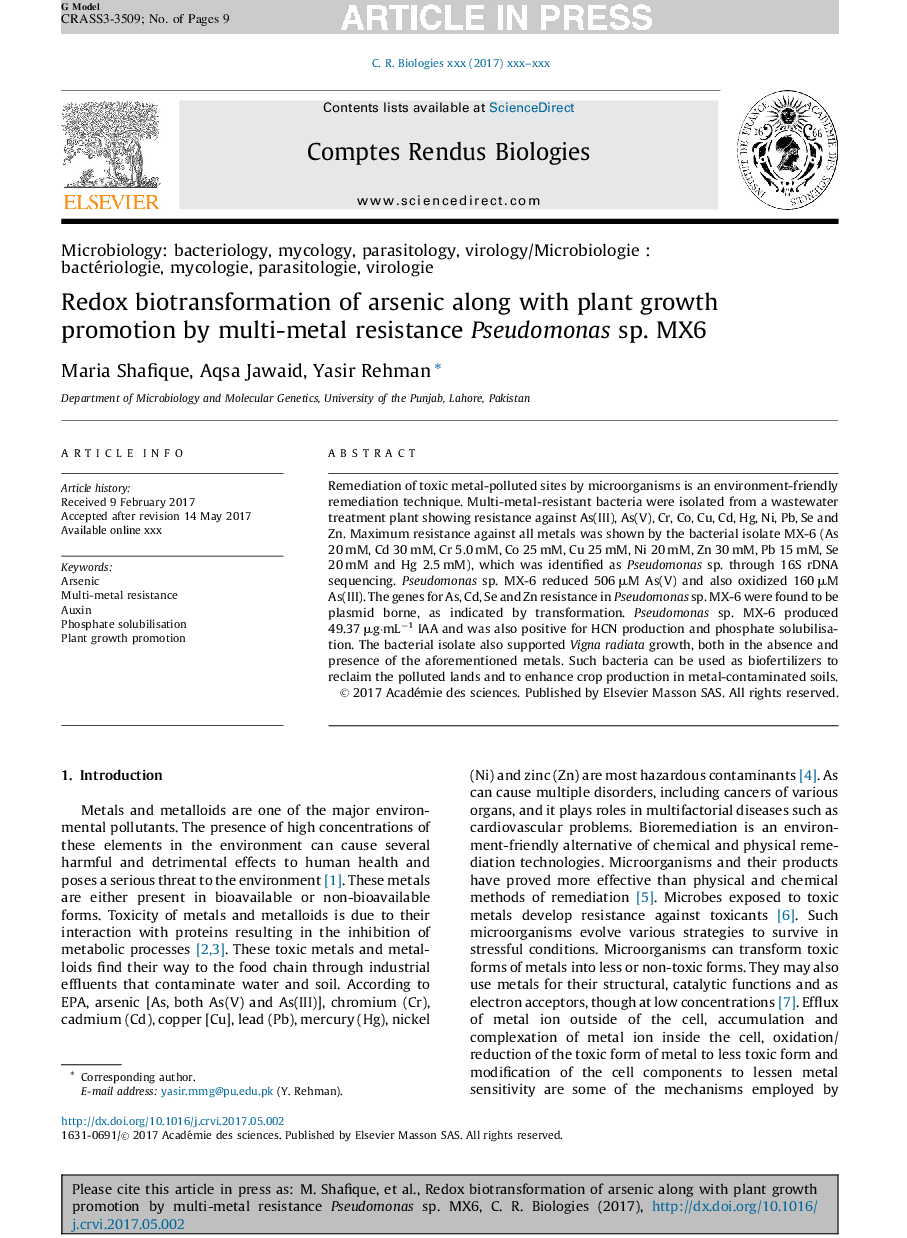| Article ID | Journal | Published Year | Pages | File Type |
|---|---|---|---|---|
| 5585502 | Comptes Rendus Biologies | 2017 | 9 Pages |
Abstract
Remediation of toxic metal-polluted sites by microorganisms is an environment-friendly remediation technique. Multi-metal-resistant bacteria were isolated from a wastewater treatment plant showing resistance against As(III), As(V), Cr, Co, Cu, Cd, Hg, Ni, Pb, Se and Zn. Maximum resistance against all metals was shown by the bacterial isolate MX-6 (As 20 mM, Cd 30 mM, Cr 5.0 mM, Co 25 mM, Cu 25 mM, Ni 20 mM, Zn 30 mM, Pb 15 mM, Se 20 mM and Hg 2.5 mM), which was identified as Pseudomonas sp. through 16S rDNA sequencing. Pseudomonas sp. MX-6 reduced 506 μM As(V) and also oxidized 160 μM As(III). The genes for As, Cd, Se and Zn resistance in Pseudomonas sp. MX-6 were found to be plasmid borne, as indicated by transformation. Pseudomonas sp. MX-6 produced 49.37 μg·mLâ1 IAA and was also positive for HCN production and phosphate solubilisation. The bacterial isolate also supported Vigna radiata growth, both in the absence and presence of the aforementioned metals. Such bacteria can be used as biofertilizers to reclaim the polluted lands and to enhance crop production in metal-contaminated soils.
Related Topics
Life Sciences
Agricultural and Biological Sciences
Agricultural and Biological Sciences (General)
Authors
Maria Shafique, Aqsa Jawaid, Yasir Rehman,
